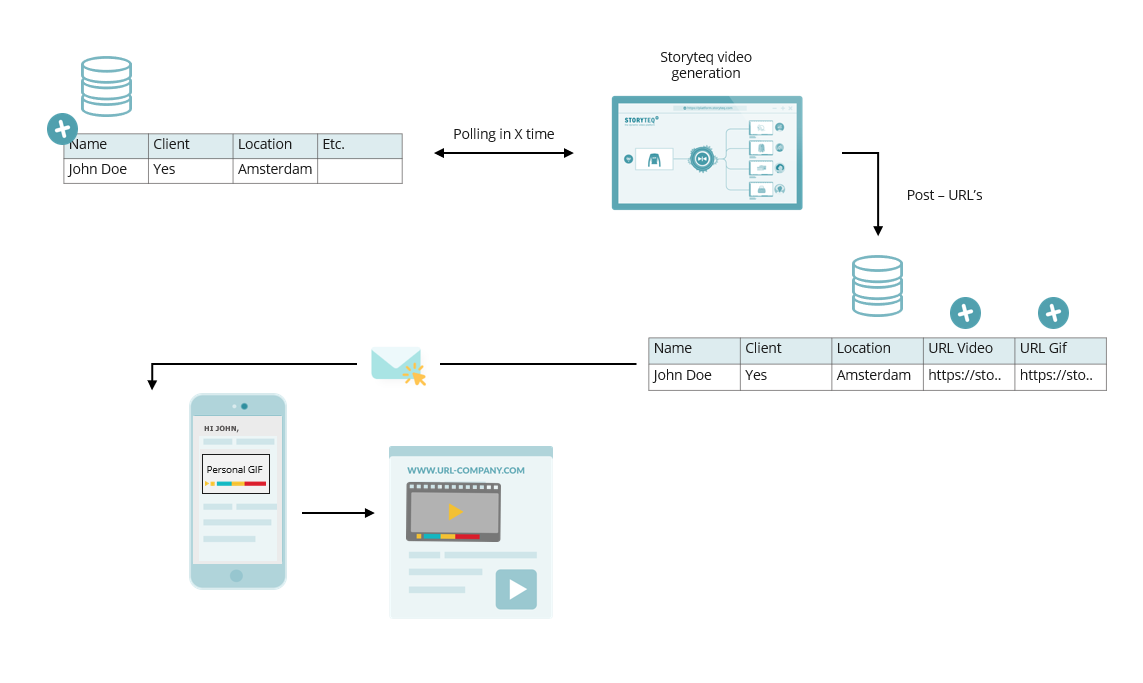Technical implementation
This section of our knowledge base elaborates certain aspects of our technique and the way of working with that technique. Please note that this is just a reference and your actual implementation of our technique will most likely be (slightly) different.
1. Storyteq render API
We implement our technique both in CRM applications and in Advertising applications. Both of these applications make use of our render functionality. For this rendering functionality, we have an API. More information about this render API can be found here.
Example of a CRM flow
For your reference, an example of a CRM flow looks like this:

2. Description of the CRM flow
The Customer Data required for the Personal Video is sent from your CRM system through a REST API connection (trigger-based, or in bulk).
Templates are data driven video projects installed and made accessible through the Storyteq platform and API. The template generates the Personal Video and gif / image based on the Customers Data. Each template has one or more parameters, parameters are data input fields which map your Customer Data to elements in a template.
If you provide values for the parameters and send them to the Storyteq API trough a POST request, a video (and gif / image) are created.
Check out our documentation on creating assets for a template.
The Customer Data travels through the Storyteq REST API to the 'rendering nodes'. On the (shielded) rendering nodes, the Customer Data is processed on a video template.
Once the video rendering is done, the generated assets are uploaded and hosted under secure URLs.
These URLs need to find their way back to the your CRM system. The best way to do this is via the notification feature. Generation of the video can take a few seconds up to a few minutes with large batches. The notification feature allows the Storyteq API to send back the asset URLs the second they are ready. Check our documentation for subscribing on updates through notifications or requesting the generated asset URLs manually.
Returning the generated asset URLs to your CRM system forms the trigger for sending out the email to your customers. The email contains the personalized gif or image and will lead to landing page where the Personal Video can be watched
On your landing page, the Storyteq video player can be implemented to easily load the created video trough a unique hash also returned by the Storyteq API. The unique hash can be passed on from the email as a URL parameter to the your landing page. Check out our documentation on the Storyteq video player.
Videos created by the Storyteq platform are available for 30 days (unless agreed otherwise). Personal data is used for the sole purpose of rendering videos and the data that is used will be deleted automatically after 60 days (unless agreed otherwise).
Storyteq has put in place commercially reasonable physical, electronic, and organizational procedures to safeguard and secure the information (Data) we collect, receive and/or process through or/and with Storyteq’s services. These are described in our Data Policy.
3. Advertising
Our platform can be used for video advertising. The channels that can be used are:
Facebook/Instagram (via FB business manager)
YouTube (via Google Ads or DV360)
Open-web/VAST (via DV360 or direct deals)
